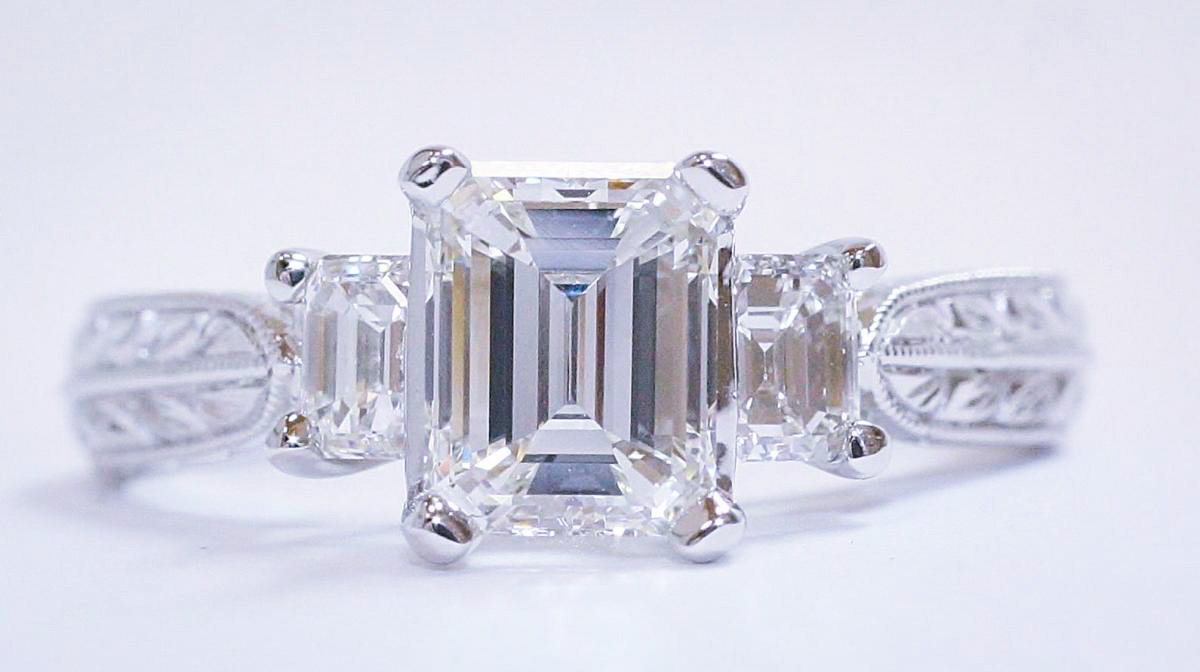Common Diamond Ring Settings
Of all the aspects to consider when buying a diamond ring in New Orleans, the setting (i.e. the way the diamond or diamonds are attached to the ring) is sometimes the most overlooked. While the diamond itself will usually be the foremost consideration, the setting itself is often mistakenly an afterthought. How the diamond is set can actually have a huge impact on how the diamond will appear, and the setting itself can be the centerpiece of the ring’s other design elements.
There are many different kinds of settings available, and in the following guide from New Orleans Diamond Buyer we’ll try to define some diamond ring setting options, and highlight their various features.
Diamond Prong Settings
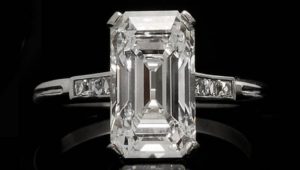 Probably the most common way for a diamond to be set is the prong setting. At its simplest, a prong is a small metal ‘claw’ that holds the diamond tightly, clamping it in place. A prong can be rounded, flat, pointed, V-shaped, or even in fashioned in creative shapes like hearts or “fishtail” prongs.
Probably the most common way for a diamond to be set is the prong setting. At its simplest, a prong is a small metal ‘claw’ that holds the diamond tightly, clamping it in place. A prong can be rounded, flat, pointed, V-shaped, or even in fashioned in creative shapes like hearts or “fishtail” prongs.
Most prong settings consist of either four or six prongs. With four prongs there is less metal, so that not only is more of the diamond visible, but more light can travel through the stone creating more fire and brilliance. The benefit of a six prong setting is simply security: with more prongs, the diamond is certainly more secure. When used with a single diamond, the prong setting draws all the eye’s attention to the gem, with little or no extra metalwork to distract.
What type of prong and how many prongs are needed is often determined by the shape of the diamond. Princess, heart, marquise, and pear cuts often require V-shaped prongs because of their pointed corners. One of the most iconic prong settings is the Tiffany classic six-prong setting for round brilliant diamonds. Originally offered in 1886, this often copied setting is by far the most popular option for engagement rings.
Double claw prong settings are sometimes used to enhance the shapes of cushion, radiant, and emerald cuts. “Fishtail” shaped prongs can appear to “square” the shape of round brilliant diamonds, and give the illusion of a larger stone.
Diamond Bezel Settings
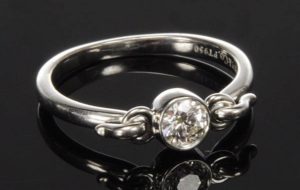 The Bezel setting is probably the second most popular setting for diamonds. Rather than securing the diamond with prongs, the bezel setting encircles the stone at the top surface, or girdle, with a custom-made rim of thin metal which holds the stone firmly in place. Bezel settings can be full, in which the collar completely encircles the stone, or partial, in which a part of the diamond’s side profile is revealed.
The Bezel setting is probably the second most popular setting for diamonds. Rather than securing the diamond with prongs, the bezel setting encircles the stone at the top surface, or girdle, with a custom-made rim of thin metal which holds the stone firmly in place. Bezel settings can be full, in which the collar completely encircles the stone, or partial, in which a part of the diamond’s side profile is revealed.
The biggest advantage of the bezel setting is security. Each bezel setting is custom made for the diamond it will secure, so the fit is always perfect. The outer girdle of the diamond is set in a small ridge inside the bezel setting, with the top lip of metal then bent around the upper part of the stone. The result is a well-protected, low profile setting. Full bezel settings are one of the safest and most protective settings, appropriate for people with active lifestyles.
Diamond Tension Settings
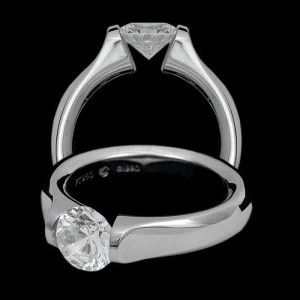 True to its name, a tension setting uses the tension of the ring itself to secure the diamond, and in many cases the diamond appears to ‘float’ in space. Using highly accurate measurements of the diamond, the jeweler cuts small grooves into the sides of the ring shank in such a way that the girdle of the stone is held by the pressure of the metal band pushing on the sides of the diamond. This very sleek and modern looking setting is actually quite a bit more secure than it looks—when properly constructed, tensions settings are among the strongest settings of all.
True to its name, a tension setting uses the tension of the ring itself to secure the diamond, and in many cases the diamond appears to ‘float’ in space. Using highly accurate measurements of the diamond, the jeweler cuts small grooves into the sides of the ring shank in such a way that the girdle of the stone is held by the pressure of the metal band pushing on the sides of the diamond. This very sleek and modern looking setting is actually quite a bit more secure than it looks—when properly constructed, tensions settings are among the strongest settings of all.
As the ring band of a tension setting is made specifically for an individual diamond, it cannot be resized in a conventional way. Lasers calibrate the precise amount of pressure the setting puts on the diamond so that it is held securely without shattering. As a result, the diamond and the setting can be damaged if the ring suffers a blunt impact. Tension settings can be more expensive than other settings as well. Not only are they complicated to construct, but more metal is typically used as well. The heavier the ring is, the stronger the tension produced, and the more secure the setting.
Tension settings should be differentiated from tension-style settings. In a tension-style setting, the diamond is held in place by a metal band that surrounds the stone. The resulting setting lets in less light than a true tension setting and is easier to make as well, and should be priced accordingly.
Diamond Flush Settings
Also known as a gypsy setting, a flush setting sets the diamond into a hole drilled into the band of the ring so that the diamond sits “flush” with the band of the ring. Once the diamond is placed into the hole, the jeweler then secures it by hammering metal around the diamond to hold it in place. Particularly popular for men’s wedding rings, flush settings offer a high level of security for the diamond and protect it from chipping or falling out.
Multiple Diamond Settings
Diamond Channel Settings
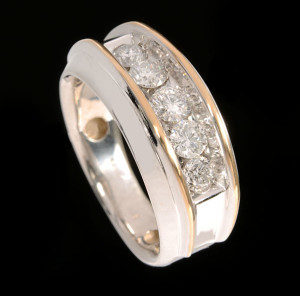 Popular for Eternity rings or for smaller diamonds on the band of engagement rings, channel set diamonds are held in place by grooves carved into a metal channel, with no metal separating them. The row of stones are flush with the surface of the ring, and not only are they very secure, but they’re unlikely to snag on clothing and the like, with the metal channel protecting the girdle of the diamonds.
Popular for Eternity rings or for smaller diamonds on the band of engagement rings, channel set diamonds are held in place by grooves carved into a metal channel, with no metal separating them. The row of stones are flush with the surface of the ring, and not only are they very secure, but they’re unlikely to snag on clothing and the like, with the metal channel protecting the girdle of the diamonds.
The only disadvantage with a channel setting is that it can complicate resizing work as the diamonds are incorporated into the band itself.
Diamond Pavé Settings
Named for the French word for “ to pave,” pavé settings involve three or more rows of small diamonds set into the ring’s metal tightly against each other, and level with the surface of the ring, giving the appearance of the ring being ‘paved’ with diamonds. The jeweler creates small holes in the ring, carefully places the diamonds there, and forms small beads or mini-prongs around each one to hold the individual diamond in place.
Pavé settings have the advantage of making a center stone look better and bigger than it might be otherwise, and are a popular for eternity bands. Micro pavé refers to very small (.01 carat) diamonds. As with channel settings, resizing a pavé set ring can be difficult to impossible.
Where to Sell a Diamond Ring
If you would like to sell a diamond ring for cash, please contact New Orleans Diamond Buyer today for a free diamond appraisal and consultation.
Call (504) 313-5067
Common Diamond Ring Settings

